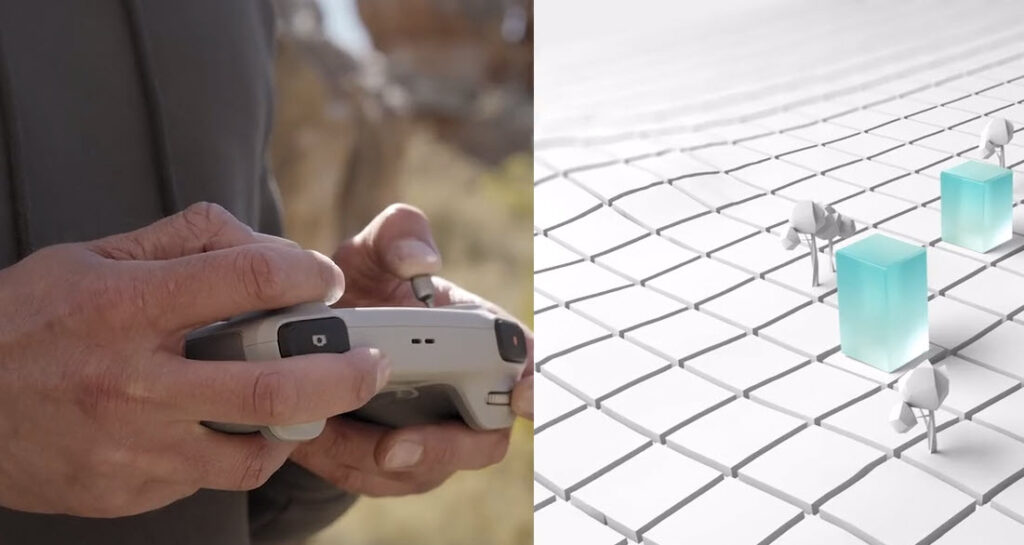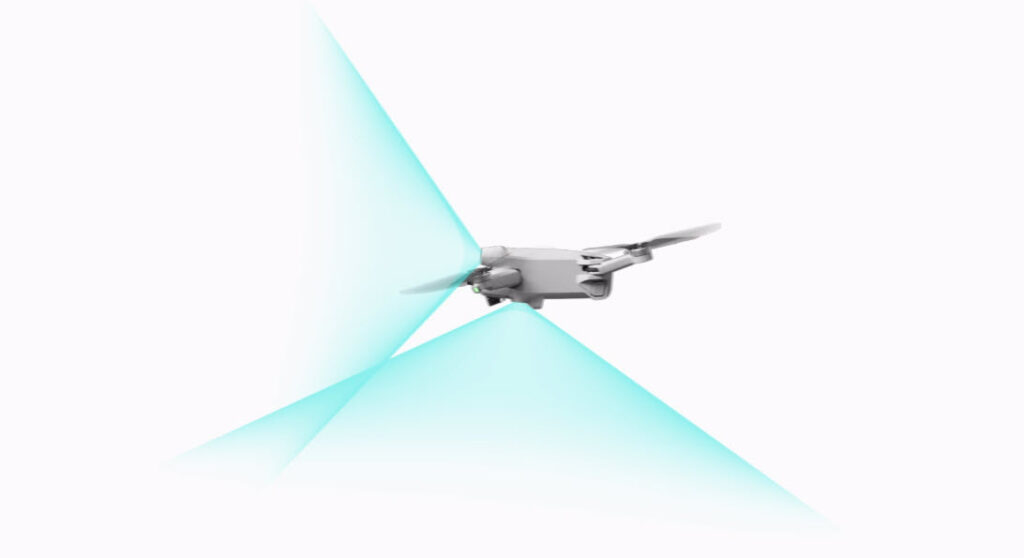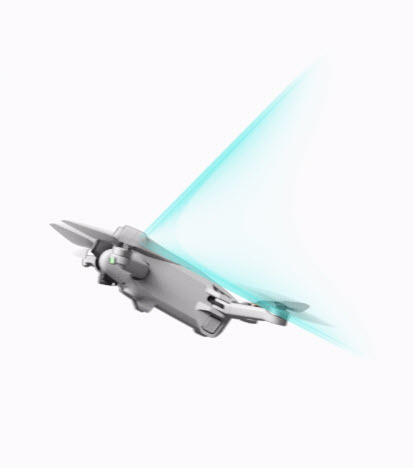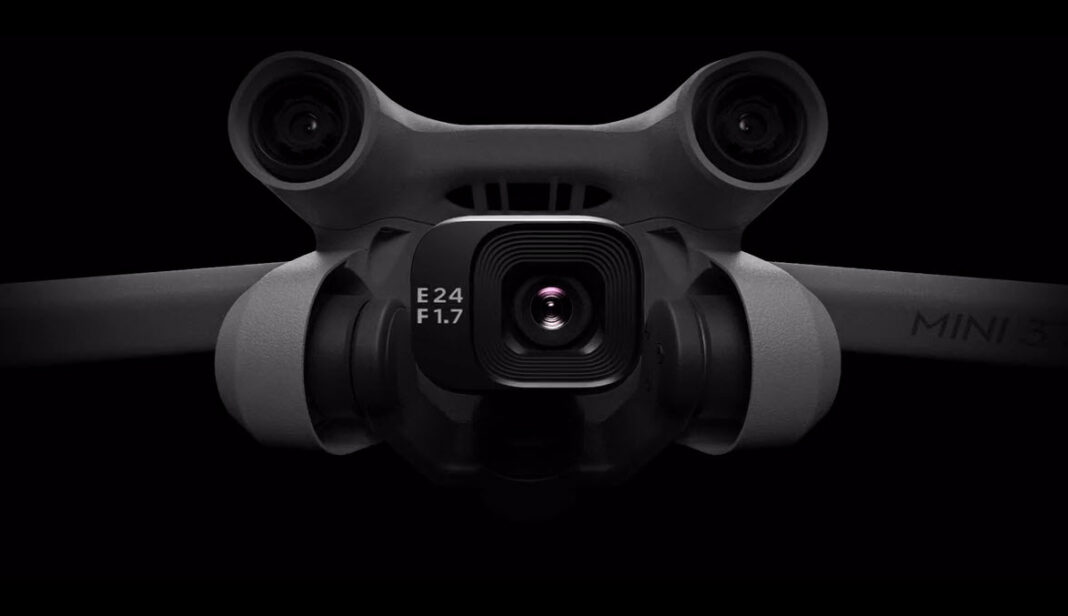DJI recently pleased its fans with another novelty. A new model of the Mini series has hit the market: the DJI Mini 3 Pro. Compared to the Mini 2, the third generation of the family represents the most extensive upgrade of all flying camera components. Many have noticed the “Pro” in the name of the new model, which should hint at more advanced features of the device. And this is in line with expectations.
First observations and test flights show that the drone has the high performance of larger models, but all this is in a compact folding body. We are talking about a larger camera matrix, and the built-in obstacle avoidance system, and intelligent flight modes, and much more. Mini 3 Pro is perfect for both experienced pilots and beginners. However, there is one “BUT” – the price, which turned out to be higher than many thought. However, in the current situation, this is more than understandable.


The main differences between Mini 3 and Mini 3
What is added in the new version?
- obstacle avoidance sensors
- rotating gimbal for vertical shooting of photos and videos,
- Active Track 4.0 mode for capturing moving subjects
- shooting modes in 4K/60 and HDR for 4K/30 and below,
- video format 1080p/120fps,
- shooting photos in 48 megapixel resolution (including photos in RAW format),
- gimbal tilt range increased to 60° up (for shooting above the drone),
- FocusShots mode (including POI and SpotLight functions),
- mastershot mode,
- QuickShot Asteroid mode (before that there was another version of QuickShots),
as an option D-Cinelike, - OcuSync 3.0 technology with a claimed transmission range of up to 12 km in 1080p
wind resistance, - flight time up to 34 minutes (or up to 47 minutes with Plus battery),
- new RC with built-in display
Something interesting about batteries
Before talking about the main characteristics of the new model, it is worth discussing one important detail in the construction of the Mini 3 Pro. This drone is designed to use 2 different batteries:
- DJI Intelligent Flight Battery: 34 minutes flight time
- DJI Intelligent Flight Battery Plus: 47 minutes flight time
The first battery is standard. The second one is more advanced in its characteristics and allows, as we can see, to increase the flight time up to 47 minutes. For such a copter, this is a unique indicator at the moment.


How do they differ from each other besides different flight characteristics? If we judge the shape, size and form factor, then in general, nothing. But the second battery is heavier. Its installation in a drone immediately increases the total weight of the device to 289 grams. It seems to be a little – only 40 grams – but they immediately transfer the quadcopter into the category of models that will have to be registered in many countries.
DJI European distributors are unable to offer their customers the purchase of a more advanced battery for the Mini 3 Pro. They claim that DJI simply refuses to sell such batteries in Europe due to weight restrictions. Whether this is true, no one knows for sure. We will assume that the unofficial position of DJI reflects the true state of affairs. Perhaps over time the situation will change for the better.
General characteristics and some features
Interestingly, although the dimensions of the Mini 3 Pro are slightly larger than other Mini models, the weight of the new product remains the same – 249 grams (with a standard battery). The Mini 3 has an improved wide-angle camera with improved aperture, lossless digital zoom, tilt-up gimbal (for shooting from a low angle), and a 9:16 aspect ratio (portrait) option especially for Instagram Stories. , TikTok and other vertical photo and video platforms. In addition, for safe flights at low altitudes with a large number of obstacles, sensors were built in three planes.


In terms of features and price, the ultralight Mini 3 is much closer to the Mavic 2 Air, but differs from the second in greater portability. And this makes it as convenient as possible for those who like to travel and capture local attractions or their own adventures. However, the Mini 3 Pro lacks some of the features that the Mavic 2 has, including the lack of sensors on the fourth plane and the ADS-B AirSense transponder. This makes it dangerous to fly in areas with heavy air traffic. However, the latter is already a rarity in the practice of most pilots.
The internal storage of the Mini 3 Pro is pretty modest considering the capabilities of its camera. It has only 1.2 GB of internal memory, so if you forget your memory card, you can take a few photos and record videos. However, 4K video files can quickly fill up the internal storage space. Therefore, do not forget to install a microSD card of 32 or 64 GB before shooting.
RC Controller
DJI offers 3 options for purchasing the Mini 3 Pro (excluding combo kits): without remote, with RC-N1 remote, and with the new DJI RC remote.
The latter is lightweight and can work up to 4 hours. The display is built into the console. The DJI Fly app is also preinstalled. The remote control helps the pilot to focus on the flight, and the power system helps to conserve the battery of the smartphone.


An alternative option is to use the DJI RC-N1 remote control, which is now compatible with the DJI Mini 3 Pro, as it was previously compatible with a number of other drone models: Mini 2, Mavic Air 2, and Air 2S. This remote control does not have a built-in display, so its operation will not be as convenient, because you will have to connect a smartphone to it.
Both controllers included with the respective Mini 3 Pro bundles provide smooth flight and responsive controls, as well as a maximum video rate of 18Mbps with ultra-low latency of 120ms.
Camera
The new DJI Mini 3 Pro quadcopter was created primarily for fans of aerial photography, including those who wish to create content for their blogs and social networks. Actually, mainly because of the camera, manufacturers added a remarkable piece of “Pro” to the name of the quadrocopter. Therefore, it will not be superfluous to take a closer look at the capabilities of the new Mini’s filming system.
A notable feature of the novelty is a larger CMOS-matrix of the camera: 1/1.3 inches. In addition, one of the notable technologies is dual native ISO, as well as direct video output in HDR. This means that each frame will be processed with a wider dynamic range to show more detail in both the highlights and shadows.


It is important to note that HDR video does not support recording at more than 30 frames per second. Content quality is further improved with a large 2.4µm pixel size and f/1.7 aperture. This allows you to make images more realistic even when you shoot in poor lighting conditions.
The Mini 3 Pro’s camera has a zoom function that offers up to 4x zoom in FHD or 2x zoom in 4K.
These qualities set the Mini 3 apart from other amateur-class drones that are cheaper due to manufacturers’ compromises on the on-board camera. Usually in such cases, the cheap models of the matrices were made smaller. The matrix in the Mini 3 Pro, though not the largest, but its size was still larger than many expected. In practice, this solution helps to create photos and videos that pleasantly surprise with their clarity and detail. It also means more editing flexibility.
You can capture 48MP RAW photos with the Mini 3 Pro, as well as record 4K video at up to 60fps and create 1080p/120fps slow motion video. Thanks to the availability of the D-Cinelike color mode, you can now process video and get more interesting frames in terms of color solutions.
While the image quality is truly impressive, the range of motion of the drone’s camera is even more impressive. It is capable of shooting vertical photos and videos, as well as looking straight up (shooting from a low angle). These are unique characteristics for a drone, and even more so for an amateur class. DJI has never offered anything like this in this class before.
Intelligent Shooting Modes in DJI Mini 3 Pro
The gimbal, camera and related technologies are ideal for capturing impressive content from the air. And for content lovers, the Mini 3 Pro’s range of intelligent shooting modes helps. Although some of them have already been mentioned, it would be logical to say a little more about them.
The first smart shooting mode worth noting on the Mini 3 Pro is the true vertical shooting mode, which is made much more possible thanks to the expanded gimbal rotation and tilt ranges.
It is also worth noting the MasterShots mode. And while this is far from a new smart mode on DJI flying cameras, it is definitely a must-have in models like the Mini 3 Pro, which experts consider to be the ideal drone for beginners. MasterShots mode is great for any novice photographer or videographer: its “trick” is the use of an automatic method of capturing the scene you need. The pilot in this mode has the opportunity to select an object that will be in focus of the Mini 3 Pro camera. The same, in turn, will do all the necessary work for you. The flying camera will make several consecutive maneuvers and record a short high quality video.


At first glance, it seems that the video quality of the Mini 2 and Mini 3 Pro is the same. But this is if you do not look closely at the characteristics. The Mini 2, at its maximum resolution of 4K, did not exceed 30 frames per second. Yes, it was not bad at all, but worse than the more expensive and heavier models like the Mavic Air 2. Now, the Mini 3 Pro can also shoot up to 4K resolution, but at 60fps. It also allows you to use other tools, including slow motion and shooting in HDR, if the frame rate is set to 24, 25 or 30 fps in any resolution.
It has already been noted that the new drone is able to rotate the camera to a portrait (“vertical”) position. And this, of course, is complemented by the function of quickly switching from landscape to portrait mode and vice versa. This innovation will please not only those who want to engage in portrait photography, but also those who actively post their photos and videos on social networks like Instagram, TikTok or others that require uploading in a similar format. Finally, this will allow for such cases not to engage in special cropping of images and lose a lot of interesting visual information.
The Mini 3 Pro’s gentlemanly set of smart shooting features also includes a set of QuickShot modes: Dronie, Helix, Rocket, Circle, Boomerang and Asteroid. Regarding the latter, it is worth noting that the Mini 2 did not have this mode. Meanwhile, it has some pretty fun video shooting capabilities. The algorithm causes the drone to start shooting from a spherical panorama at a high altitude. Then the device descends and completes the maneuver so that the desired object is in the center.


Many owners of older Mini series models complained that their flying cameras couldn’t track the subject. And this is while the same DJI Spark (which is no longer produced by the company) was quite capable of doing this. DJI never officially explained the reason for this decision, perhaps there were hardware and software limitations, or maybe economic considerations.
But now owners of the Mini 3 Pro will not have such problems, as the drone has received the new ActiveTrack 4.0 feature. In this case, the pilot will have the opportunity to choose one of two tracking modes Trace or Parallel. When you turn on the first one, the drone will track the object of interest to you at the same distance. Well, in the second mode, you guessed it, the drone will fly near the object at a certain distance and at a certain stable angle.
But this is not all. In fact, the ActiveTrack feature has become part of the FocusTrack mode. And it, in turn, includes features: Spotlight 2.0 and Point of Interest 3.0. The first keeps the subject in the frame while you manually control the drone, while POI makes the drone automatically fly around the subject and capture it.
Flight performance and safety
DJI Mini 3 Pro has very decent flight characteristics: time in the air, stability in flight and speed, as well as signal transmission range parameters up to 8 km. Thanks to the O3 transmission system, operators can receive crisp 1080p real-time images from up to 8 km away.
The table below summarizes the main performance specifications
- Max. flight time 34 min.
(with Intelligent Flight Battery and when flying at 21.6 km/h in calm conditions)
47 min.
(with Intelligent Flight Battery Plus and flying at 21.6 km/h in calm conditions) - Max. speed (above sea level, no wind) 16 m/s (S mode)
10 m/s (N mode)
6 m/s (mode C) - Max. rate of climb 5 m/s (mode S)
3 m/s (N mode)
2 m/s (mode C) - Max. sink rate 5 m/s (S mode)
3 m/s (N mode)
1.5 m/s (mode C) - Max. ceiling above sea level With Intelligent Flight Battery: 4000 m
With Intelligent Flight Battery Plus: 3000 m - Max. soaring time (in calm weather) 30 min. (with Intelligent Flight Battery in no wind conditions)
40 min. (with Intelligent Flight Battery Plus in no wind conditions) - Max. permissible wind speed 8.5–10.5 m/h (level 5)
- Max. Tilt Angle
Front:
40°
Behind:
35° (S mode)
25° (N mode)
25° (mode C) - Operating temperature range 0° to 40°C
Basically, as you can see from the table, most of the Mini 3 Pro’s specs are the same as the latest hobby quads from DJI. Also retained are the three flight modes Cine, Normal and Sport, which are typical of most consumer and semi-professional DJI models. It makes no sense to dwell on them in detail, since their parameters and features are well known to all owners of DJI drones.
In terms of security systems, the Mini 3 Pro has a clear advantage over its predecessors by integrating a 3-way obstacle detection system into it. It is based on visual sensors with dual vision in front, behind and below. Newly designed hull planes provide a wider view of obstacles.




In addition, the Mini 3 Pro is also equipped with APAS 4.0 (Advanced Pilot Assistance Systems), which improves the safety of piloting. True, it does not work in all resolutions.
Design and construction
Even the appearance suggests that DJI has put a lot of work into their new drone to make it high quality and sought after by aerial photography fans. The company itself and many experts rightly emphasize that the engineers managed to pack a huge amount of advanced technology into a very compact case. For those unfamiliar with the Mini series, it will be amazing to see just how tiny this drone really is.
Along with the size, the fact that everything was able to fit within 249 grams (except for the weight of the Plus battery) is also amazing. In fact, the number 249 is critical for many pilots, as it saves them, as already mentioned, from having to register a drone (although not everywhere). And the well-proven folding mechanism allows you to make the drone extremely convenient for transportation. You can simply put it in a small bag or backpack and send it to shoot new media content.


The Mini 3 Pro’s portability and ease of deployment make it ideal for beginner pilots, as well as vloggers and even commercial pilots doing custom visual inspections, marketing tasks or taking wedding photography assignments.
People familiar with the DJI Mini series may also notice that the Mini 3 Pro is very different from its predecessors (at least from its series). The hull design is thought out so well that it allows you to simultaneously improve aerodynamic qualities, improve the operation of many modules (for example, visual sensors of the obstacle avoidance system) and stabilize the flight of the device.
The new body also allowed for larger propellers to be fitted to the drone. And this also affected a noticeable improvement in flight performance and piloting safety. The speed characteristics and the life of the power supplies have become much better.
Finally, an important innovation, which has been mentioned more than once, concerns the design and operation of the suspension. Now it is installed differently in the body, which allows you to better control the camera, achieve interesting shooting angles (for example, from below), and also conduct real vertical shooting, which has also been already mentioned. In general, it is surprising that the 3-axis gimbal on such a small drone is able to rotate and has greater tilt angles, as well as the ability to switch from horizontal to vertical shooting.
Fewer gimbal restrictions mean more shooting angles and more creative freedom. During high-speed flight, the angle of the drone also has less restrictions on gimbal and shooting angle.


